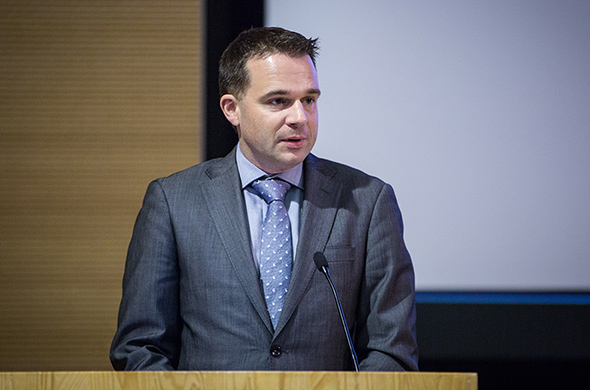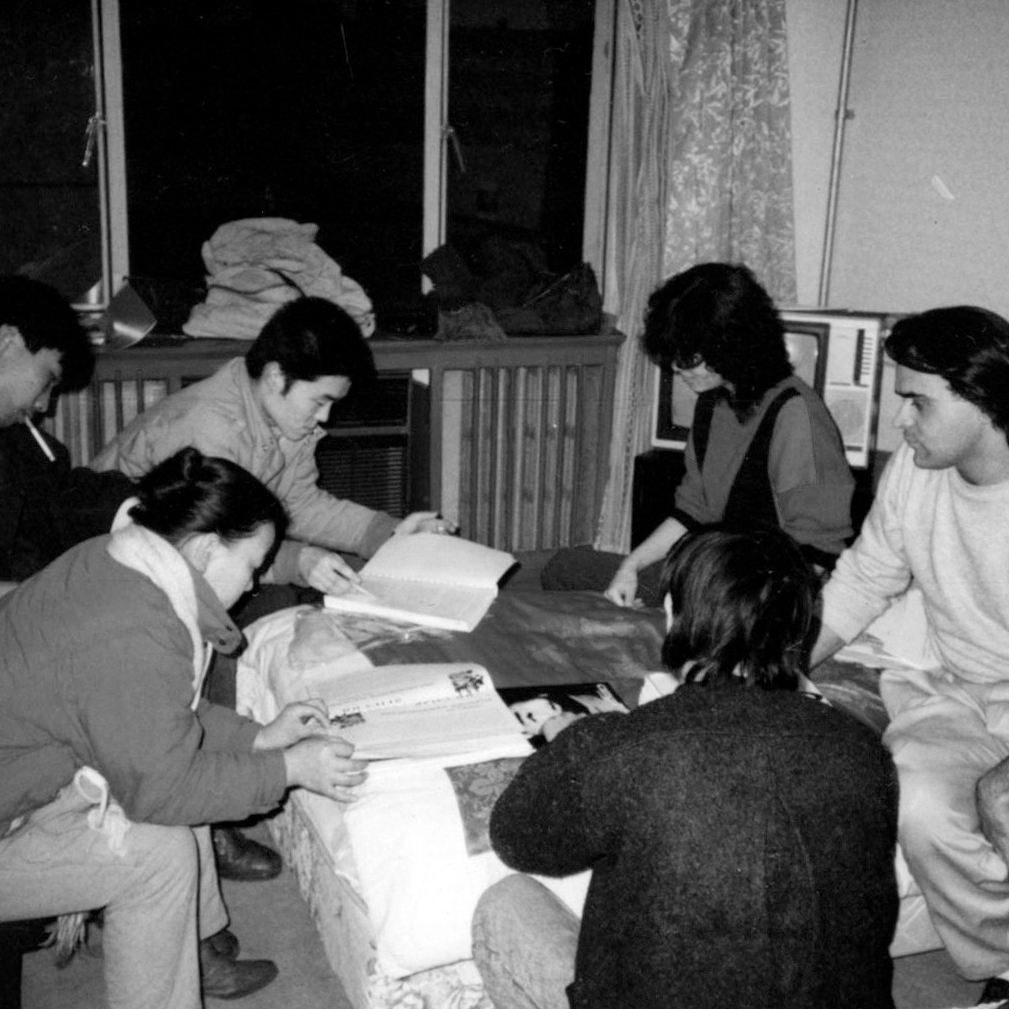
At 2:00 pm on March 25, 2014, presided over by Wang Huangsheng, Director of CAFA Art Museum, Adriaan Donszelmann, Executive Director of Van Gogh Museum in the Netherlands, gave a lecture entitled “Art Management of the Museum” in the Auditorium of CAFA Art Museum. Cultural counsellor Partrick de Vries from the Netherlands Embassy, Cees de Graaff, Director of the Netherlands Center for International Cultural Cooperation, Jessy van de Klundert-Verhoeven, Business Manager of the Consulting Department in the Van Gogh Museum were specially invited to attend the lecture. Director Wang Huangsheng initially illustrated the background of the lecture: using this opportunity to improve the cultural communication between the Netherlands and China, CAFA Art Museum signed a memo to hold onto the Sino-Netherlands Art Museum Training and Exchanging project with the Netherlands, and the project was divided into two parts including exchange and training programs.
Then Wang Huangsheng introduced the speaker Adriaan Dönszelmann, who served as the Executive Director of the Jewish History Museum from 2009 to 2011. Since 2011 he has worked in the Van Gogh Museum, and was appointed as Executive Director of the museum in 2013. His work mainly involves planning and controlling the budget of the museum, human resources and infrastructure management, venue security and maintenance, the expansion of the institution and management of the relationship with other institutions, etc.
Adriaann Dönszelmann initially introduced the basic concept of the Van Gogh Museum, which was founded in 1973, and its task was to show the works by Van Gogh and the artists of the time. The previous collections were owned by the family, now it has collected 200 paintings and 800 drafts by Van Gogh, as well as all the letters. It originally planned to receive 200 thousand visitors each year, but actually it was visited annually by 15 million people. It made them face enormous challenges in the management of the museum, and he shared the experiences of exhibitions and management over the 40 years during the lecture.
As one of the most visited museums in the world, the Van Gogh Museum showcased the hd versions of the works on social networking platforms in order to reduce the visitors to the museum, and it received a great deal of attention. On the other hand, it tried to use scientific methods to protect the collections, and actively looked for partners, such as cooperation with oil companies, universities and other art museums. At the same time, Adriaan believed that, a museum traditionally played a key role in the heritage and education of the region, but because of the changes of the audience and their requirement, it also actively opened up some new patterns that suited the development of the museum, for example, cooperation with suppliers, introducing management personnel with a business background.
In addition, he thought that the preservation and development of the commercial value of the collection were the key issues at present. About seventy-five percent of its revenue had to be self-raised each year, and the recent new building cost as much as 50 million euros which was also self-raised. Now the incomes of the museum tickets were 20 million euros, adding to this the incomes of commodity sales which was 8 million euros, which only covers keep fifty percent of the daily operating costs. Therefore it can’t rely on these income streams, and the funding pressure is the reason why they are urgently looking for new development forms.
Integrating the specific situation of the Van Gogh Museum, Adriaan put forward four principles for museum management: first was how to develop the exhibition, both protecting the cultural heritage and increasing the audience to appreciate the masterpieces; secondly collecting and managing the collections, including 200 works by Van Gogh that couldn’t be lent and showcased, it needed donations and effective management; thirdly, the registration of the collections, all the collections in the museum went along with hd versions; fourthly, risk and safe management, now there were 25 works on display outside the museum, the exhibition institutions must be clearly investigated before the works are lent to them, such as the security arrangements, management capability and protection technology, etc.
In the second part, it was a Q & A section, the audience asked questions to Adriaan on the fund-raising, standardization of the construction, the sustainable development of the museum, professional training, form of public education activities, qualities of the museum staff, methods to select volunteers, maintenance cycle of a collection. Adriaan briefly answered them.
Recently CAFA ART INFO released a video of the lecture, if you want to know more details on the lecture, please continue to focus on the video channel at
CAFA ART INFO http://en.cafa.com.cn/category/video.
Journalist: Ye Yuanfeng, translated by Chen Peihua and edited by Sue, Photo: Yang Yanyuan/CAFA ART INFO




























